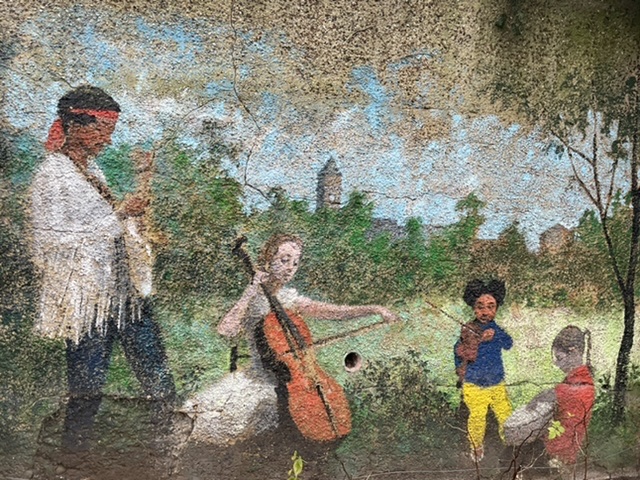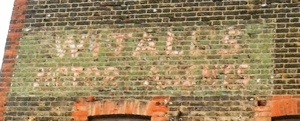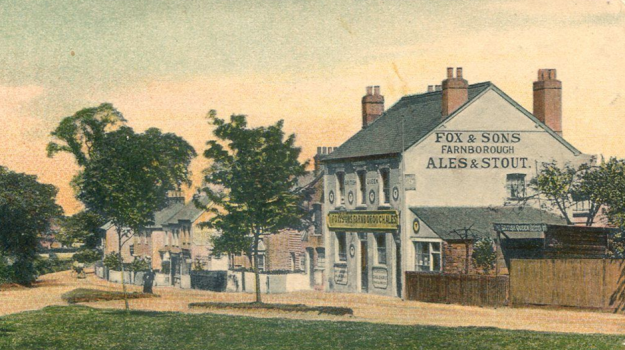A while ago Running Past covered one of the more significant music venues in Lee, the still closed (mid 2022) Dirty South, the last incarnation of the Rose of Lee. A bit further down Lee High Road was El Partido, a short-lived club from early 1964 until some point towards the end of 1967. For a small venue above some shops away from central London it was able to attract a number of bands and artists who went onto have very successful careers including Elton John, Status Quo, influential prog rock band Gentle Giant., along with Jimmy Cliff early in his career and Bo Diddley a little past his peak.
El Partido was above numbers 8-12 Lee High Road, on the other side of the entrance to Clarendon Yard to the Sultan – a drinking haunt of Siouxsie Sioux amongst others. The buildings for both have gone, 8-12 is pictured on the right of the photograph below – mid-way between signs for Bonds Hats and the Coal Office from around 6 decades before.

When it opened it was probably above Jay’s Furnishing, hire purchase furnishers, whose ghost sign remains around the corner in Clarendon Rise, they had been there since the 1930s although they seem to have gone by 1965 and shop fronts below were empty. Whether their departure is linked to El Partido’s arrival isn’t clear.

El Partido was described as ‘a hangout for Mods and Jamaicans ….2 floors of live R&B, blues, ska and reggae, open all night and very noisy.’ In playing this mixture of music, particularly the reggae, it was unusual in the Lewisham of the mid 1960s. The club was described in a post on Transpontine blog as having
‘…. a small stage and very low ceilings just the place for live acts. Usually with two sound systems, one on each floor…..The smell of hash in the air people dancing everywhere.’
It appears to have gone through at least two phases of ownership, one when it was managed by Peter Rollins, with ownership by his brother John. The other owner was Bryan Mason, who also managed The Loose Ends who in turn frequently played at El Partido. The dates of either period of ownership aren’t particularly clear though.
The Loose Ends cut a couple of singles with Decca, including Tax Man from 1966 (Decca had a distribution centre further up Lee High Road, but that was a decade later).
Another regular was Duke Lee who either performed and/or was DJ on numerous occasions.
In the early period at the beginning of 1964, one of the bands to play was The Spectres, who were an early incarnation of Status Quo – the band had its roots at Sedgehill School where Francis Rossi and Alan Lancaster had met and by this stage included drummer John Coghlan.

One of the best known (when he played) names to appear at El Partido was Bo Diddley in October 1965, although he was past his peak in terms of success. Nonetheless a set from Bo Diddley would have been something of a coup for the club. He had played numerous styles and influenced artists from Buddy Holly to the Beatles and the Clash. A couple of years before he had toured the UK with Little Richard, the Rolling Stones and the Everly Brothers.

Elton John (pictured a few years later), at that stage known as Reg Dwight, played with his then band, Bluesology, a couple of times in late 1965 and early 1966. Dwight’s alter ego, Elton John, wasn’t to emerge for another year or so. Bluesology also acted as the backing band for Major Lance a significant R&B and later Northern Soul artist who also appeared at El Partido in late 1965. Similarly Bluesology also provided the backing for the influential R&B singer Doris Troy in early 1966. She was later well known for being one of the backing singers on Pink Floyd’s ‘Dark Side of the Moon.’
Simon Dupree and the Big Sound played there in early 1966, a psychedelic band, they neither included anyone called ‘Simon’, ‘Dupree’ and despite a hit with ‘Kite’, didn’t become ‘Big’; they nearly recruited the aforementioned keyboard player Reg Dwight who toured with them for a while in 1967. However, the Shulman brothers who made up most of the band, had some success and much more influence with the slightly odd prog rock band Gentle Giant in the 1970s.
The Drifters appeared there in early 1966; whether it was THE Drifters or a British group using the same name isn’t clear, if it was THE Drifters it isn’t clear which of the numerous variants it was.

In April 1966 Jimmy Cliff played, it would have been one of his earlier UK gigs soon after he signed to Island Records. On the same bill was Duke Reid who ‘dominated the Jamaican music scene of the 1960s, specialising in ska and rocksteady’ probably doing a DJ set at El Partido. A few weeks earlier Wilson Pickett was meant to have played but there seems to have been a double booking. Cliff was to return to El Partido in August 1966. (The album cover is from a couple of years later)
Carl Douglas was to appear a couple of times in the summer of 1966, eight years before his big hit – Kung Fu Fighting
The ‘Unbreakable’ Tea Set alas seem not to have been an early incarnation of Pink Floyd; the July date was in the summer of 1966 – they’d been known as Pink Floyd since late 1965, although the name change may have been prompted by, appearing on the same bill as the ‘unbreakable’ version.
El Partido seems to have closed down in 1967, the reasons aren’t completely clear but there seem to have been a number of drug raids from the constabulary.
The building was redeveloped into a fairly nondescript shop and office mix, probably in the mid 1990s, certainly it predates StreetView and the current Lewisham Planning Portal – a dental practice now occupies the cavity that Elton John performed in four times.

And finally …..there is a rumour of an appearance (although not performance) of Jimi Hendrix at El Partido. There are a fair number of rumours like this in the area, including a stay at the Station Hotel at Hither Green. There isn’t any clear evidence for any of them, but it is part of the musical folklore of the area, which is depicted in a mural in Manor Park close by.

Credits
- The Kelly’s Directory information comes via Lewisham and Southwark Archives
- The photograph of the lower end of Lee High Road is via Lewisham Archives, it is used with their permission but remains their copyright
- The picture of Bo Diddley is on a Creative Commons via Wikipedia, as is the 1971 photo of Elton John
- The Jimmy Cliff album cover is also from By All Music Guide, Fair use license via Wikipedia
- The dates of when acts performed at El Partido come from Garage Hangover
- The advert for El Partido was a screen shot from Facebook a few years ago, it almost certainly originated in the music press, probably Melody Maker where the club regularly advertised. If its your image and you want me to take it down do let me know.
.


























